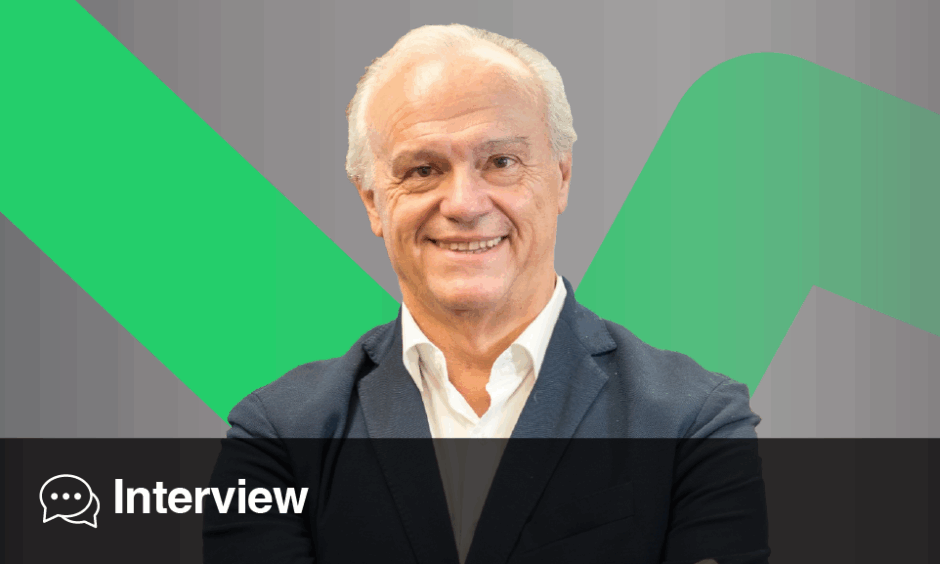Mário Morais-Almeida | Head of Immunoallergy Department, Hospital CUF Centre, Lisbon, Portugal; President, World Allergy Organization (WAO), Milwaukee, Wisconsin, USA
Citation: EMJ Allergy Immunol. 2025;10[1]:100-103. https://doi.org/10.33590/emjallergyimmunol/CPVU3728
![]()
With your extensive experience heading Immunoallergy Departments and your long-standing clinical practice, what do you consider the most significant shifts in the landscape of allergic diseases that you’ve observed since becoming a specialist in 1994?
Since 1994, the field of allergy and clinical immunology has undergone a profound transformation, both in terms of scientific understanding and clinical practice. One of the most significant shifts has been the move from symptom-based diagnoses to a more precise, endotype-driven approach, particularly in conditions such as asthma and atopic dermatitis, to name a few. This has allowed us to better stratify patients and personalise treatment across all age groups. The increased global prevalence of allergic diseases, especially in urbanised and industrialised regions, has also drawn attention to the complex interplay between genetic predisposition and environmental factors, including the effect of climate change. Another critical achievement has been the development of molecular allergology, which has enabled more refined diagnostic tools and improved the safety and efficacy of allergen immunotherapy. Biologic therapies have revolutionised, for instance, the management of severe asthma and chronic urticaria, and we are now seeing similar advances in food allergy, atopic dermatitis, and chronic rhinosinusitis. For instance, the progress in the management of hereditary angioedema has been tremendous. Finally, there has been a recognition of immunoallergic diseases as a global health issue, supported by more structured guidelines and increased advocacy from international bodies such as the World Allergy Organization (WAO).
Your expertise spans a wide range of allergic conditions, with a special research interest in respiratory and food allergy. Looking at respiratory allergy, what are the most exciting recent advancements in diagnosis and management that you believe are truly impacting patient outcomes today?
Recent advances in respiratory allergy have significantly improved both diagnostic precision and treatment outcomes. One of the most exciting developments is the integration of functional and molecular diagnostics into clinical practice. Respiratory functional tests and the measurement of inhaled biomarkers, when available, are nowadays essential tools in clinical management. Component-resolved diagnostics particularly allow clinicians to identify specific allergenic molecules responsible for sensitisation, which is useful in polysensitised patients and in deciding on the most appropriate allergen immunotherapy. This level of granularity helps reduce misdiagnosis and tailors the therapy to the individual.
On the management side, the advent of biologic therapies has dramatically changed the outlook for patients with severe allergic asthma. Monoclonal antibodies, namely those targeting IgE (omalizumab), IL-5 (mepolizumab, reslizumab), IL-5 receptor (benralizumab), IL-4/IL-13 (dupilumab), and TSLP (tezepelumab), have shown impressive results in improving control and reducing both exacerbations and oral steroid consumption. These therapies are now being matched to patients based on low-cost biomarkers, such as blood eosinophils or fractional exhaled nitric oxide, ushering in a truly personalised approach.
Furthermore, digital health tools and telemedicine have enhanced patient monitoring and treatment adherence, especially during the COVID-19 pandemic. Together, these innovations are shifting the paradigm towards precision-based and proactive care in respiratory allergy.
Given your involvement with chronic rhinitis and rhinosinusitis, what are the most promising avenues of research currently being pursued in allergic rhinitis, especially concerning personalised approaches or environmental factors?
In allergic rhinitis, research, as promoted by the Allergic Rhinitis and its Impact on Asthma (ARIA) initiative, is increasingly focused on personalised medicine, integrating biomarkers, phenotyping, and environmental profiling to tailor management strategies. One of the most promising areas is the identification of endotypes, distinct pathophysiological mechanisms underlying clinical phenotypes, which may respond differently to specific therapies. For example, patients with predominant eosinophilic inflammation may benefit more from intranasal corticosteroids, including in association with inhaled antihistamines, while patients with predominantly non-allergic rhinitis triggers may require alternative approaches.
Environmental exposome research is also gaining traction. Understanding the cumulative impact of air pollution, aeroallergen exposure, climate change, and indoor environmental factors on allergic rhinitis expression and severity is key to preventive strategies. Additionally, advances in wearable sensors and mobile apps, such as MASK-air® (MASKnow enable real-time tracking of symptom patterns, environmental exposures, and therapeutic outcomes, contributing to adaptive treatment plans.
Another active research domain involves immunomodulatory therapies, including molecules that can prevent respiratory infections and modulate the allergic response, as well as allergen immunotherapy, from infancy to adulthood. These approaches aim to not only alleviate symptoms but also modify disease progression and prevent asthma onset.
In the realm of food allergy, particularly from preschool age to the elderly, where do you see the greatest unmet needs, and what emerging research or therapies hold the most promise for addressing these challenges?
Food allergy presents significant unmet needs across all age groups, particularly in terms of early diagnosis, risk stratification, and disease-modifying therapies. In children, the need for accurate early diagnosis is critical, as misdiagnosis can lead to unnecessary dietary restrictions or missed opportunities for tolerance induction. The use of molecular diagnostics and oral food challenges remains underutilised in many clinical settings, largely due to resource limitations.
One of the most promising therapeutic advances is oral immunotherapy, which has shown efficacy in desensitising children to major allergens such as peanut, milk, and egg. However, concerns about safety and long-term efficacy remain. The introduction of epicutaneous immunotherapy and other novel immunotherapy routes, currently under investigation, may offer safer alternatives with better adherence.
In older patients, comorbidities and polypharmacy pose additional challenges. Furthermore, adult-onset food allergy is often under-recognised and requires more targeted epidemiological research.
Preventive strategies, such as early allergen introduction, are well supported by several well-controlled studies and are beginning to reshape clinical guidelines, offering long-term hope. However, access to omalizumab to prevent anaphylaxis in patients with food allergy is only available in the US, and adrenaline auto-injector devices for self-administration are absent in so many countries.
As a co-coordinator of Portuguese guidelines on asthma management, what key lessons have you learnt from translating global recommendations like the Global Strategy for Asthma Management and Prevention (GINA) into national practice, and what unique challenges does asthma management continue to present in real-world settings?
Adapting international guidelines to national contexts requires both scientific rigour and pragmatic sensitivity to local healthcare realities. One of the key lessons has been the importance of simplifying messages for primary care and ensuring that asthma management is integrated into the routine practice of several health care providers, rather than being viewed as a specialist domain. As an example, while GINA offers an excellent framework, national or regional guidelines must reflect local disparities, namely in medication availability, reimbursement systems, and health literacy.
A persistent challenge is ensuring correct inhaler technique and adherence, which remain major barriers to asthma control. Digital tools and structured education programmes have been valuable, but more systematic implementation is needed. Another key issue is timely phenotyping, particularly in moderate-to-severe asthma and all forms of uncontrolled asthma. Many patients with asthma remain under-assessed for eligibility for the most indicated therapies due to limited access to simple biomarker testing or referral pathways.
We’ve also learnt that involving general practitioners and paediatricians in the co-creation and dissemination of guidelines and recommendations increases uptake and improves patient outcomes, emphasising the need for multidisciplinary collaboration.
Your research interests include epidemiology and environmental risk factors for allergic diseases. How are current climate trends and environmental changes impacting the prevalence and severity of allergies, and what role can allergists play in public health advocacy in this regard?
Climate change is a growing driver of the immunoallergic disease burden. Rising temperatures and increased CO₂ levels are leading to longer pollen seasons, higher allergenicity of pollens, and shifts in plant distribution. Urbanisation and air pollution, particularly fine particulate matter and ozone, exacerbate respiratory, ocular, and cutaneous allergic symptoms, and may even contribute to primary sensitisation. Wildfire smoke and extreme weather events are also emerging as acute triggers of asthma exacerbations.
Allergists are uniquely positioned to bridge the gap between clinical care and environmental health. As public health advocates, we can raise awareness about the health impacts of climate change, contribute to policy discussions, and support mitigation strategies. This includes promoting urban green spaces, clean air initiatives, and sustainable healthcare practices.
In research, we must continue to develop and validate exposure-response models and push for the inclusion of climate-related variables in epidemiological studies of allergy and clinical immunology. Clinically, individualised professional and patient education should now routinely include environmental risk counselling and exposure minimisation strategies.
As the incoming President of the WAO for 2025–2026, what are your top 2–3 strategic priorities for the organisation during your tenure?
As we begin this mandate at the WAO, our action plan is guided by three central priorities:
First, we aim to reduce both local and global disparities in access to immunoallergy care. This involves developing and disseminating targeted recommendations for both public and private healthcare stakeholders in order to ensure equitable access to allergy prevention, diagnosis, and treatment, especially in underserved and vulnerable populations. There are pronounced inequalities in allergy diagnosis and management, particularly in low- and middle-income countries. For this reason, through regional training hubs, guideline adaptation, and support for local leadership, we would like to contribute to building long-lasting capacity.
Second, we seek to position WAO as a ‘lighthouse’, a global beacon of harmony, safety, and quality in allergy and clinical immunology care. We are committed to promoting the highest standards of practice and inclusiveness, fostering a universal approach to patient care that transcends regional and socioeconomic differences. Equipping frontline healthcare providers worldwide with essential knowledge is critical to closing the implementation gap.
Third, we will work to enhance the global visibility and impact of WAO through a cohesive strategy spanning scientific leadership, education, communication, and patient engagement. This includes amplifying our voice in international health dialogues, consolidating our reputation as a leader in awareness and best practices dissemination, and empowering patients and healthcare professionals worldwide.
Together, these pillars will reinforce WAO’s mission to unify and elevate the field of allergy and clinical immunology, driving meaningful change through global, regional, and local collaboration, scientific excellence, and patient-centred values. Our extremely motivated WAO Board of Directors and our WAO Executive Medical Director must be a catalytic force for change, empowering the allergy community to deliver equitable, evidence-based care worldwide.
What insights can you share regarding the balance between the clinical demands of heading a busy department and your significant roles in research and international leadership?
Balancing clinical leadership, research, and international responsibilities requires clear prioritisation, team empowerment, and personal discipline. One key insight is that delegation is not about relinquishing responsibility but about cultivating trust and developing others. I have been fortunate to work with outstanding colleagues, members of the WAO Board of Directors, and 115 member organisations, who share a common vision and commitment to excellence in patient care and academic growth. The support of our dedicated staff must also be recognised.
Structuring time for research amidst clinical duties demands careful planning. I reserve protected time for scientific writing and collaboration, often working early mornings or late evenings. Strategic alignment of clinical activities with research objectives, such as embedding registries into clinical workflows, also enhances productivity and relevance.
International leadership requires a broader perspective and adaptability. It is essential to remain grounded in local realities while embracing global challenges. My leadership roles have made me more attentive to cultural and systemic diversity, and more committed to advocacy and inclusive dialogue. Ultimately, passion for the field and a sense of purpose are what sustain the balance.
And, the unwavering support of my family, always in my mind, is essential to fulfilling my mission of serving WAO.






